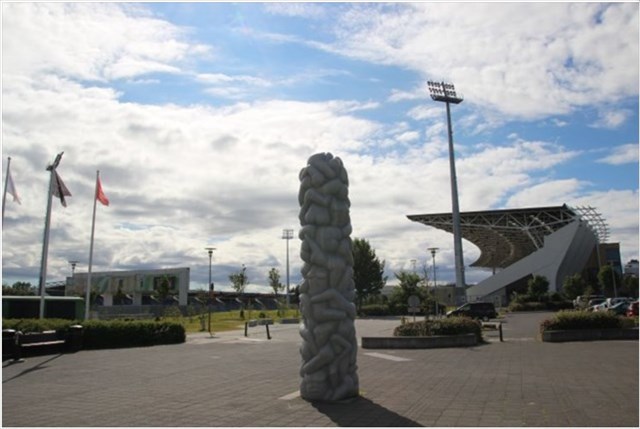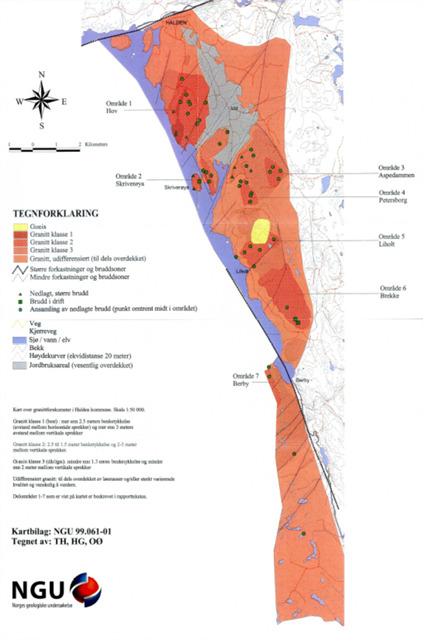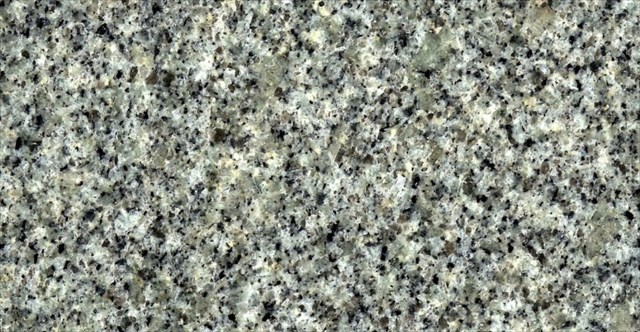
The Iddefjord granite is found at the east part of Halden, Norway and belongs to the Norwegian bedrock. For about 925 million years ago, a stone melting process, pressed into the surrounding gneiss and solidified into a solid rock far below the surface. Inside the gneiss, pegmatic passages forced in with large crystals that penetrated, and there has been an operation drift on feldspar, quartz, mica, beryll and flusspat (fluorite). The intrusion marks the end of the Sveconorevegian mountain chain formation.
Iddefjord granite can be divided into 13 different units, based on differences in mineralogy, internal structures and relative age order. The oldest part of the Iddefjord granite is the Isegranite which forms the northeastern part of the granite in the area of Isesjøen. The youngest is Hoggetgranitten, located in the southern part of Kirkøy. In all parts of the Iddefjord granite there has been natural stone fracture, but naturally most of the fractures are located near the sea.

(quarry areas for the iddefjord granite)
A granite stone in general:
Granite is a common type of felsic intrusive igneous rock that is granular and with visible crystals in its texture. Granites can be found in white, pink, or gray in color, depending on their mineralogy. The “normal” %-numbers given in the granite stone is between 20% and 60% quartz, referred to as the white glassy mineral, and at least 35% of the total feldspar, found as white till red pink-ish color, consisting of alkali feldspar, and the biotite (black mica). Commonly the term "granite" is used to refer to a wider range of coarse grained igneous rocks that containing quartz and feldspar and may have more reddish colors. While a less or non-reddish color refers more to a medium-grain, light gray, grey or blue-gray rock species.
Feldspar is crystallized (made / occurs) from magma in deep and extrusives ekstrusive. The size of the crystals tells us where and how far down into the crust they were made and formed. Easy said and explained, the larger the crystals are, the longer they have been forming, and the deeper into the crust they origin from. Feldspar is a vital element in magmatic rocks where the proportion and type of feldspar are used to classify the rock.
The Iddefjord granite has paved its way into the surrounding bedrock as a stone melt (magma) and solidified into a solid rock deep below the surface.
The melting residues squeezed out onto the surrounding bedrock and formed pegmatite passages with giant crystals of feldspar and many other minerals, some of them rare.

(example)
Radioactivity
Most granites are a bit radioactive. 8-14 g / t uranium, 35-50 g / t thorium and 3.7-6 per cent potassium have been measured in the Iddefjord granite. This can occasionally lead to the formation of the radioactive gas radon and some radiation.
Cleavage and cuts
Good granite is penetrated by near horizontal cracking surfaces that divide it into thick benches. In addition, there is a near horizontal cracking direction called a cleavage or a bottom cleavage and perpendicular to another cleavage direction. In addition, there is occasionally a third cleavage direction, the wild cleavage, perpendicular to the first two.
Once all three directions are well developed, a savvy rocker can divide the granite into cube blocks.
To log this cache.
To get to log this cache you will have to visit and answer the questions which are related to the coordinates given the earthcache.
When answers are collected, send them to CO for verification.
You can log immediately after answers are sent CO. If there are any questions about your answers CO will contact you.
Logs without answers to CO or with pending questions from CO will be deleted without any further notice.
Please do not include pictures in your log that may answer the questions.
Questions
1. Answer the questions under by visiting the Coordinates.
A. Have a look at the feldspar crystals here in the stone at gz. What size are they in mm? And as explained above in the text, what does this tell you about how deep down in the crust it origin from? (the connection between deep and time the rock has used to cool down after it was melted and then crystallized.)
B. What are the mineral mixture made up by that you can see in the stone? (looking for the 3 main sorts). And how many % would you say each of them represent in the stone?
C. Describe the four sides, are they any different from each other?
2. (It’s voluntary to post a photo in your online log of your visit)
